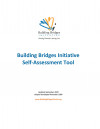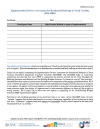Is This You?
- We gather lots of data and share lots of reports but are not sure that people are using or find value in any of it.
- What questions are we trying to answer from the data we collect?
- How are we exactly learning from our data to guide decision-making?
WHAT IS THIS?
Teams of people are getting and using the information they need at the right time to understand and improve the process of implementation, fidelity to the intended program, policy, or practice, service provision, and population outcomes.
WHY IS IT IMPORTANT?
Data systems and the information from them can only help us understand and improve when combined with people and specific questions for using it. Beyond the data itself, Getting & Using Data is about people, skills to analyze and understand the data, and teams using the data to address questions and take next steps. When Getting & Using Data is going well, there is system in place that collects, analyzes, and reports data that are then used for decision making. There are people clearly identified across multiple levels (backbone organization, community coalitions, service delivery agencies) that are responsible for ensuring data are collected, analyzed, reported, shared, and utilized. The data being collected are reliable, valid, and socially important to a community. When decisions are made, data are utilized to inform decisions. Teams complete regular and systematic PDSA cycles to improve and optimize implementation processes.
Getting and Using Data Resources & tools
 Building Bridges Initiative Self-Assessment Tool
Building Bridges Initiative Self-Assessment Tool
This survey created by the Building Bridges Initiative helps child behavioral health residential providers assess and improve their supports and services.
 Implementation Driver’s Assessment for Residential Redesign in North Carolina (IDA-RRD)
Implementation Driver’s Assessment for Residential Redesign in North Carolina (IDA-RRD)
The Implementation Drivers Assessment- Residential Redesign (IDA-RRD) was adapted from the Implementation Drivers Assessment -Triple P (IDA-TP) and a more generic implementation drivers assessment. It serves as a measure of how well Psychiatric Residential Treatment Facilities (PRTFs) support the combined application of principles from the Building Bridges Initiative (BBI) and the Six Core Strategies for Reducing Seclusions and Restraint
Find additional areas of implementation to help you in every stage.
